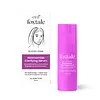What's inside
What's inside
 Key Ingredients
Key Ingredients

 Benefits
Benefits

 Concerns
Concerns

 Ingredients Side-by-side
Ingredients Side-by-side

Water
Skin ConditioningNiacinamide
SmoothingHexylene Glycol
EmulsifyingPPG-20 Methyl Glucose Ether
Skin ConditioningGlycerin
HumectantGlyceryl Glucoside
HumectantPolyglycerin-6
HumectantAzelaic Acid
BufferingBetaine
HumectantBenzyl Alcohol
PerfumingSalicylic Acid
MaskingSorbic Acid
PreservativeLecithin
EmollientLysolecithin
EmulsifyingCarbomer
Emulsion StabilisingAminomethyl Propanol
BufferingDisodium EDTA
Parfum
MaskingWater
Skin ConditioningAzelaic Acid
BufferingPropylene Glycol
HumectantCaprylyl Methicone
Skin ConditioningPEG-12 Dimethicone/PPG-20 Crosspolymer
Cyclopentasiloxane
EmollientPalmaria Palmata Extract
Skin ProtectingAlpha-Glucan Oligosaccharide
CleansingPolymnia Sonchifolia Root Juice
Skin ConditioningMaltodextrin
AbsorbentLactobacillus
Skin ConditioningSodium Acrylates Copolymer
Lecithin
EmollientArginine
MaskingEthoxydiglycol
HumectantAmmonium Acryloyldimethyltaurate/Vp Copolymer
Phenoxyethanol
PreservativeEthylhexylglycerin
Skin ConditioningPolymethylsilsesquioxane
Tocopheryl Acetate
AntioxidantDisodium EDTA
Water, Azelaic Acid, Propylene Glycol, Caprylyl Methicone, PEG-12 Dimethicone/PPG-20 Crosspolymer, Cyclopentasiloxane, Palmaria Palmata Extract, Alpha-Glucan Oligosaccharide, Polymnia Sonchifolia Root Juice, Maltodextrin, Lactobacillus, Sodium Acrylates Copolymer, Lecithin, Arginine, Ethoxydiglycol, Ammonium Acryloyldimethyltaurate/Vp Copolymer, Phenoxyethanol, Ethylhexylglycerin, Polymethylsilsesquioxane, Tocopheryl Acetate, Disodium EDTA
Ingredients Explained
These ingredients are found in both products.
Ingredients higher up in an ingredient list are typically present in a larger amount.
Azelaic acid is a multitasker ingredient that helps treat acne, pigmentation, and irritation. It is a great option for sensitive skin.
What makes azelaic special?
The best thing about azelaic acid is it's gentleness. It's generally well-tolerated and safe to use alongside other actives like niacinamide or salicylic acid.
Unlike AHAs, azelaic acid will not make you photosensitive/sun sensitive.
You can find this ingredient naturally occurring in grains like wheat, rye, and barley. In cosmetics, azelaic acid is typically lab-made, which is more stable and effective.
Learn more about Azelaic AcidDisodium EDTA plays a role in making products more stable by aiding other preservatives.
It is a chelating agent, meaning it neutralizes metal ions that may be found in a product.
Disodium EDTA is a salt of edetic acid and is found to be safe in cosmetic ingredients.
Learn more about Disodium EDTALecithin is a term for a group of substances found in the cell membranes of plants, animals, and humans. They are made up of mixture of phospholipids.
This ingredient has emollient and emulsifying properties.
As an emollient, lecithen helps soften the skin and creates a barrier to keep moisture in.
As an emulsifier, it also helps prevent water and oil ingredients from separating. Lecithin can also help ingredients be better absorbed by the skin.
This is because the phospholipids in lecithin produce liposomes. Liposomes help other ingredients get through the skin barrier.
Depending on the source of this ingredient, lecithin may not be fungal acne safe. This is because some sources of lecithin come from soybean oil, which may feed the malassezia yeast that feeds fungal acne.
We recommend reaching out to the brand you are purchasing from to inquire about the source of their lecithin.
Some other names for this ingredient include soy lecithin and deoiled soy lecithin.
Learn more about LecithinWater. It's the most common cosmetic ingredient of all. You'll usually see it at the top of ingredient lists, meaning that it makes up the largest part of the product.
So why is it so popular? Water most often acts as a solvent - this means that it helps dissolve other ingredients into the formulation.
You'll also recognize water as that liquid we all need to stay alive. If you see this, drink a glass of water. Stay hydrated!
Learn more about Water